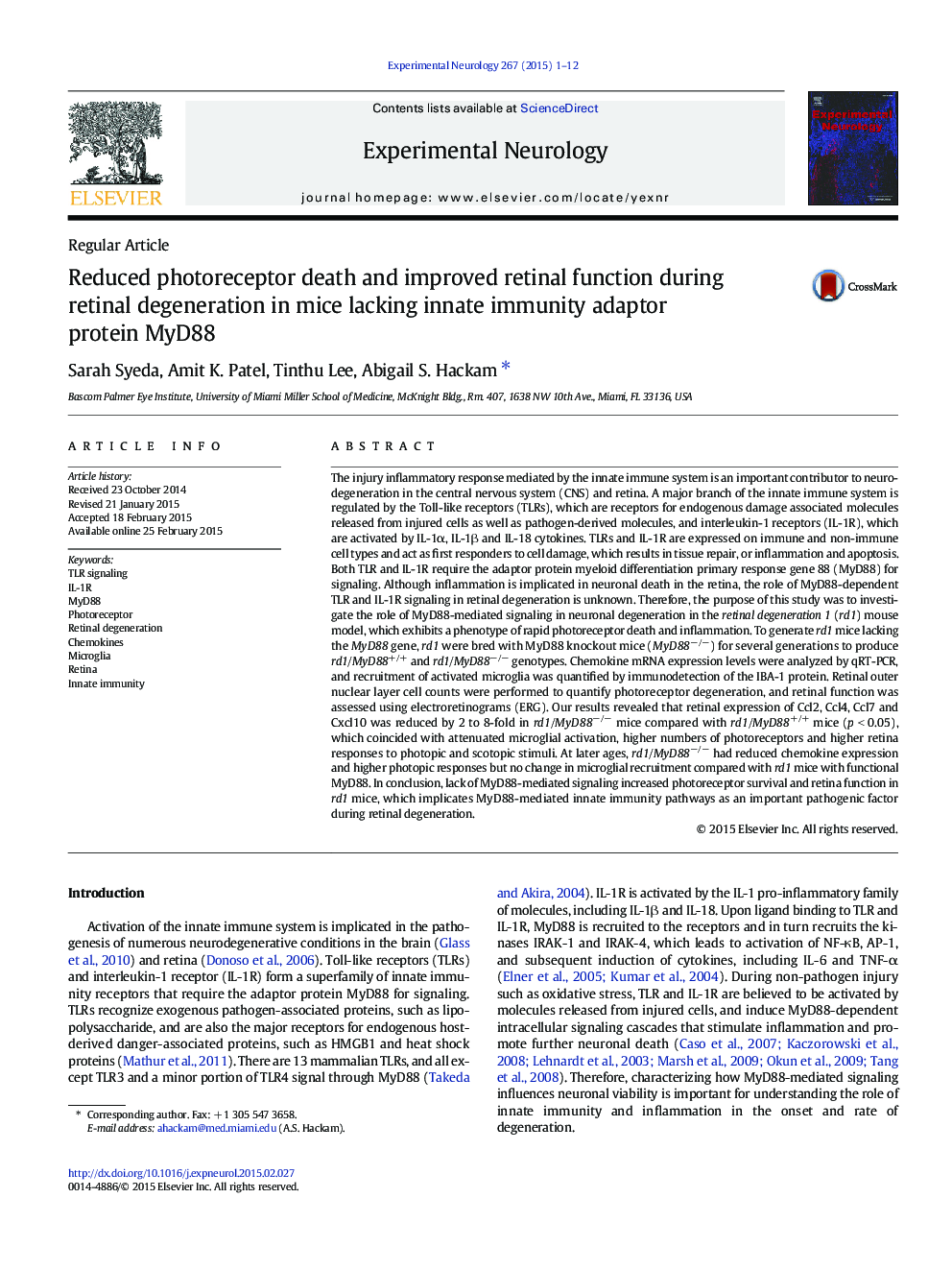| کد مقاله | کد نشریه | سال انتشار | مقاله انگلیسی | نسخه تمام متن |
|---|---|---|---|---|
| 6017781 | 1580166 | 2015 | 12 صفحه PDF | دانلود رایگان |

- Removing MyD88-dependent TLR/IL-1R signaling in retinal degeneration reduces pro-inflammatory chemokine mRNA expression
- Loss of MyD88-mediated signaling caused attenuated microglial recruitment during early degeneration but not at later time-points
- Dampened immune response in the absence of MyD88 leads to an improvement in retina function
- Therefore, TLR/IL-1R MyD88 mediated inflammatory pathways play a destructive role in retinal neurodegenerative injury
The injury inflammatory response mediated by the innate immune system is an important contributor to neurodegeneration in the central nervous system (CNS) and retina. A major branch of the innate immune system is regulated by the Toll-like receptors (TLRs), which are receptors for endogenous damage associated molecules released from injured cells as well as pathogen-derived molecules, and interleukin-1 receptors (IL-1R), which are activated by IL-1α, IL-1β and IL-18 cytokines. TLRs and IL-1R are expressed on immune and non-immune cell types and act as first responders to cell damage, which results in tissue repair, or inflammation and apoptosis. Both TLR and IL-1R require the adaptor protein myeloid differentiation primary response gene 88 (MyD88) for signaling. Although inflammation is implicated in neuronal death in the retina, the role of MyD88-dependent TLR and IL-1R signaling in retinal degeneration is unknown. Therefore, the purpose of this study was to investigate the role of MyD88-mediated signaling in neuronal degeneration in the retinal degeneration 1 (rd1) mouse model, which exhibits a phenotype of rapid photoreceptor death and inflammation. To generate rd1 mice lacking the MyD88 gene, rd1 were bred with MyD88 knockout mice (MyD88â/â) for several generations to produce rd1/MyD88+/+ and rd1/MyD88â/â genotypes. Chemokine mRNA expression levels were analyzed by qRT-PCR, and recruitment of activated microglia was quantified by immunodetection of the IBA-1 protein. Retinal outer nuclear layer cell counts were performed to quantify photoreceptor degeneration, and retinal function was assessed using electroretinograms (ERG). Our results revealed that retinal expression of Ccl2, Ccl4, Ccl7 and Cxcl10 was reduced by 2 to 8-fold in rd1/MyD88â/â mice compared with rd1/MyD88+/+ mice (p < 0.05), which coincided with attenuated microglial activation, higher numbers of photoreceptors and higher retina responses to photopic and scotopic stimuli. At later ages, rd1/MyD88â/â had reduced chemokine expression and higher photopic responses but no change in microglial recruitment compared with rd1 mice with functional MyD88. In conclusion, lack of MyD88-mediated signaling increased photoreceptor survival and retina function in rd1 mice, which implicates MyD88-mediated innate immunity pathways as an important pathogenic factor during retinal degeneration.
Journal: Experimental Neurology - Volume 267, May 2015, Pages 1-12